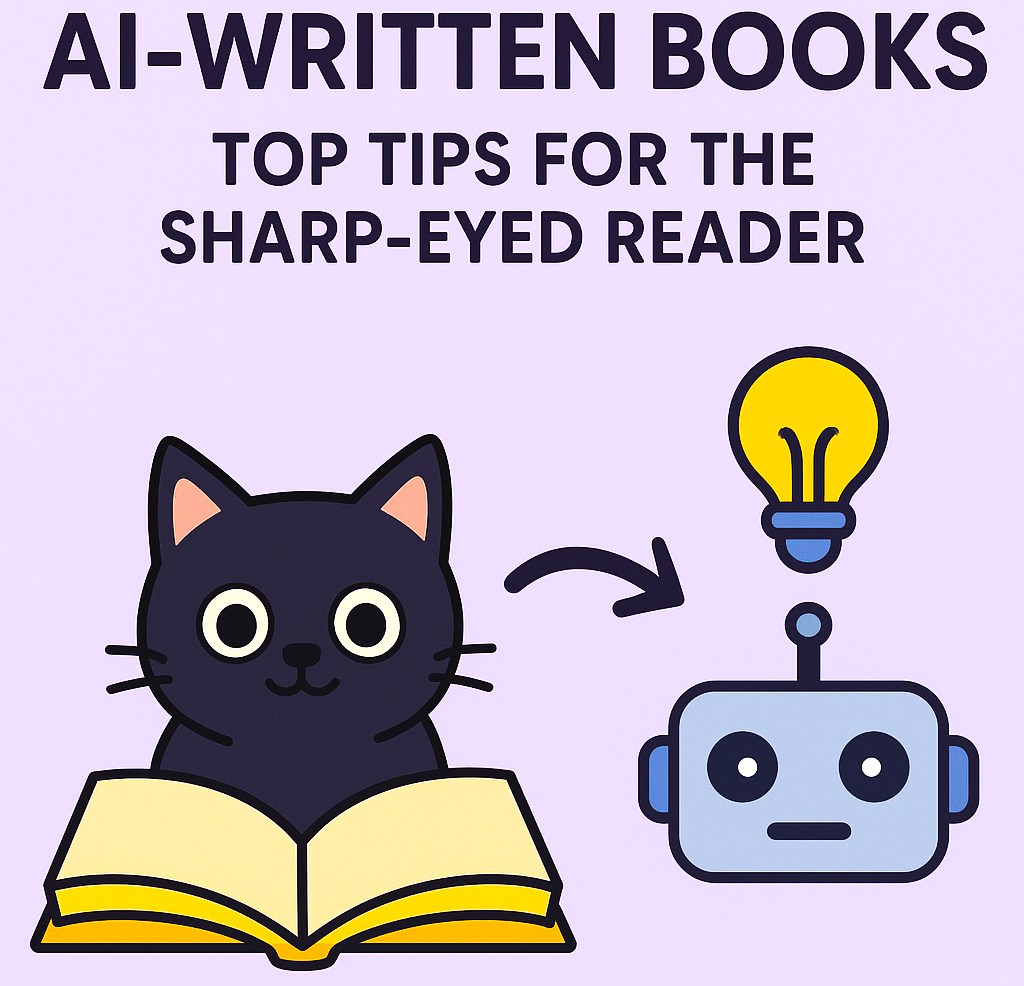AI in books can be sneaky. Sometimes it writes well enough to fool casual readers—but if you know what to look for, the robot handwriting sticks out like a neon sign.
Here’s a checklist of some things to watch out for:
1. Weird Chapter Intros & Scenarios
Generic openings: “In a world…” or “It was a dark and stormy night…” even when tone doesn’t match.
Abrupt transitions: characters suddenly appear in new places without explanation.
Overly descriptive scenery with no plot relevance.
Exposition dumps: paragraphs of backstory crammed into the first few sentences.
Robotic dialogue or inner thoughts (“I am nervous because I will fight a dragon today”).
Repetitive sentence structures across multiple chapters.
Scenario-first thinking: AI imagines the scene first, then forces characters into it.
Quick check: Read the first 3–5 sentences of a chapter. If it feels generic, forced, or info-dump-y, the AI alarm should buzz.
2. Repetition, Repetition, Repetition
Same phrases, descriptions, or lines popping up over and over—like “his piercing blue eyes” every three pages. AI loves loops; humans usually vary their wording naturally. Also sometimes the same chapter pasted more than once.
3. Weirdly Polished but Soulless
Perfect grammar and mechanics but lacking depth, voice, or personality. Reads like a writing student who aced grammar but skipped the fun stuff.
4. Name Soup Syndrome
Character names change mid-book or side characters morph with zero explanation. Narrative continuity glitch alert 🚨.
5. Over-Explaining the Obvious
Sentences like: “She cried because she was sad.” Human authors usually trust the reader’s intuition more.
6. Janky Pacing
Scenes either drag endlessly (“ten pages walking through a door”) or jump forward abruptly, like a bad cutscene. Consistent pacing is harder for AI to nail.
7. Emotion on Mute (or Overcranked)
Either zero emotional resonance or melodrama in all the wrong spots. Example: a casual side hug described like it solved world hunger.
8. Fact & Logic Fails
Characters eat breakfast three times a day. Eye color or other traits change mid-chapter. Continuity and world-building logic often slip.
9. Generic Descriptions & Cliché Buffet
Every setting is “a dark forest,” “a bustling city,” or “a grand castle,” with zero unique sensory detail. Stock filler over originality is a red flag.
10. Keyword Soup in the Blurb
Book description reads like an SEO checklist: “A dark, steamy, thrilling, forbidden, epic, paranormal, reverse harem fantasy romance…” AI loves lists.
11. Too Much, Too Fast
Authors releasing 5+ full-length books a month? 🚨 Likely leaning heavily on AI drafting. Even caffeinated humans have limits.
⚡ Bonus Tell
Author’s socials/bios are vague, and or an AI-headshot. Zero behind-the-scenes writing chatter or personal information? Odds are good AI is in the mix.
This combo of chapter-level quirks, style inconsistencies, and behavioral red flags can help you sniff out robot-written novels faster than your coffee kicks in.
🐈⬛

